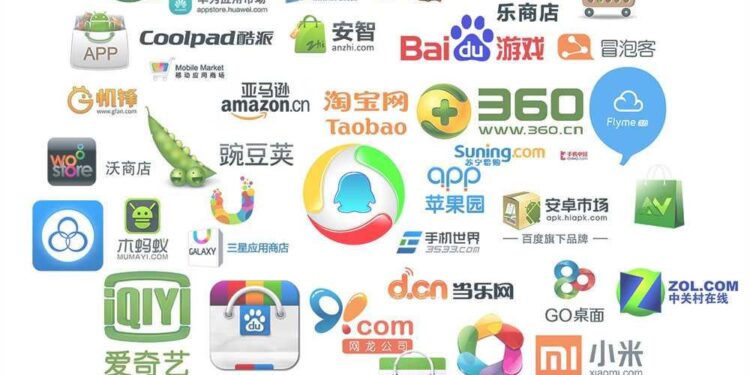In a dramatic escalation of tech tensions between two global superpowers, the United States has formally accused one of China’s largest technology firms of orchestrating a clandestine campaign to steal American trade secrets. As reported by the Times of India, this bold allegation shines a spotlight on the fierce competition and deep mistrust framing the ongoing technological rivalry. Amidst rapid innovation and geopolitical maneuvering, the stakes have never been higher, and this latest development underscores the complex interplay between national security, economic ambition, and the future of global technology.
America alleges espionage tactics by major Chinese tech giant affecting global trade dynamics
In a move that has sent ripples across international markets, American authorities have formally accused one of China’s leading technology corporations of employing sophisticated espionage methods to infiltrate sensitive trade environments. Allegations suggest that covert operations were meticulously designed to extract proprietary information, intellectual property, and strategic business data, thereby tilting the competitive balance on a global scale. These claims come amid increasing scrutiny over technology transfer practices and raise pressing questions about cybersecurity vulnerabilities facing multinational enterprises.
Key concerns highlighted include:
- Systematic intellectual property theft through cyber-intrusions
- Use of advanced malware targeting critical supply chain networks
- Covert collaborations aimed at bypassing international trade regulations
| Aspect | Alleged Tactic | Impact |
|---|---|---|
| Cyber Intrusions | Advanced persistent threats (APT) | Data exfiltration and trade secret loss |
| Supply Chain | Malware implantations | Disruption and surveillance |
| Regulatory Evasion | Hidden partnerships | Manipulated market dynamics |
Analyzing the impact of intellectual property theft on international tech innovation and security
Intellectual property theft poses a multifaceted challenge to the landscape of global technology, triggering ripple effects that extend far beyond the immediate loss of proprietary information. When companies engage in or fall victim to such practices, the repercussions include delayed innovation cycles, erosion of competitive advantage, and a disruption of trust in international collaborations. This delicate balance between cooperation and competition is further strained as nations grapple with safeguarding their technological sovereignty while trying to foster open innovation ecosystems. The resulting climate often leads to tightened security protocols and a shift towards more insular research and development efforts, sometimes at the cost of slowed progress.
Key consequences of intellectual property theft on tech innovation and security include:
- Accelerated but Unsanctioned Innovation: Stolen trade secrets may lead to rapid product developments, but these lack the rigor of original research and can introduce vulnerabilities.
- Heightened Cybersecurity Measures: Corporations and governments ramp up cyber defenses, increasing operational costs and sometimes creating barriers to legitimate information exchange.
- Shifting Geopolitical Dynamics: Accusations of intellectual theft contribute to mistrust, prompting stricter regulatory frameworks and impacting cross-border tech partnerships.
| Impact Area | Effect on Innovation | Security Implications |
|---|---|---|
| R&D Collaboration | Reduced openness | Increased vetting protocols |
| Product Development | Faster but riskier | Potential exploitable flaws |
| International Relations | Strained trust | Enhanced surveillance |
Recommendations for strengthening cybersecurity measures and fostering transparent cross-border collaborations
To effectively counter growing cybersecurity threats, nations must invest in robust, adaptive defenses that go beyond traditional firewalls and intrusion detection systems. This includes advancing encryption standards, deploying AI-powered threat analysis, and fostering continuous employee training programs designed to spot and thwart sophisticated cyber intrusions. Equally important is the establishment of clear legal frameworks that ensure accountability and rapid response when breaches occur, providing both deterrence and remediation channels for affected parties.
Fostering transparent and cooperative cross-border cybersecurity collaborations can dramatically improve mutual trust and collective security. Governments and private sectors should prioritize:
- Real-time intelligence sharing to anticipate and neutralize threats before they escalate.
- Joint cyber-exercise initiatives to align response protocols and build resilient networks.
- Harmonized regulatory standards that streamline compliance and reduce loopholes exploited by cybercriminals.
By adopting these strategies, countries can transform competition into cooperation, creating a digital environment that protects innovation and fosters economic progress.
| Strategy | Key Benefit | |||||||
|---|---|---|---|---|---|---|---|---|
| Advanced Encryption Protocols | Secures sensitive data with cutting-edge cryptographic methods | |||||||
| International Info Sharing | Improves early detection of cyberattacks globally | |||||||
| Joint Cybersecurity Drills |
To effectively counter growing cybersecurity threats, nations must invest in robust, adaptive defenses that go beyond traditional firewalls and intrusion detection systems. This includes advancing encryption standards, deploying AI-powered threat analysis, and fostering continuous employee training programs designed to spot and thwart sophisticated cyber intrusions. Equally important is the establishment of clear legal frameworks that ensure accountability and rapid response when breaches occur, providing both deterrence and remediation channels for affected parties. Fostering transparent and cooperative cross-border cybersecurity collaborations can dramatically improve mutual trust and collective security. Governments and private sectors should prioritize:
By adopting these strategies, countries can transform competition into cooperation, creating a digital environment that protects innovation and fosters economic progress.
|






























